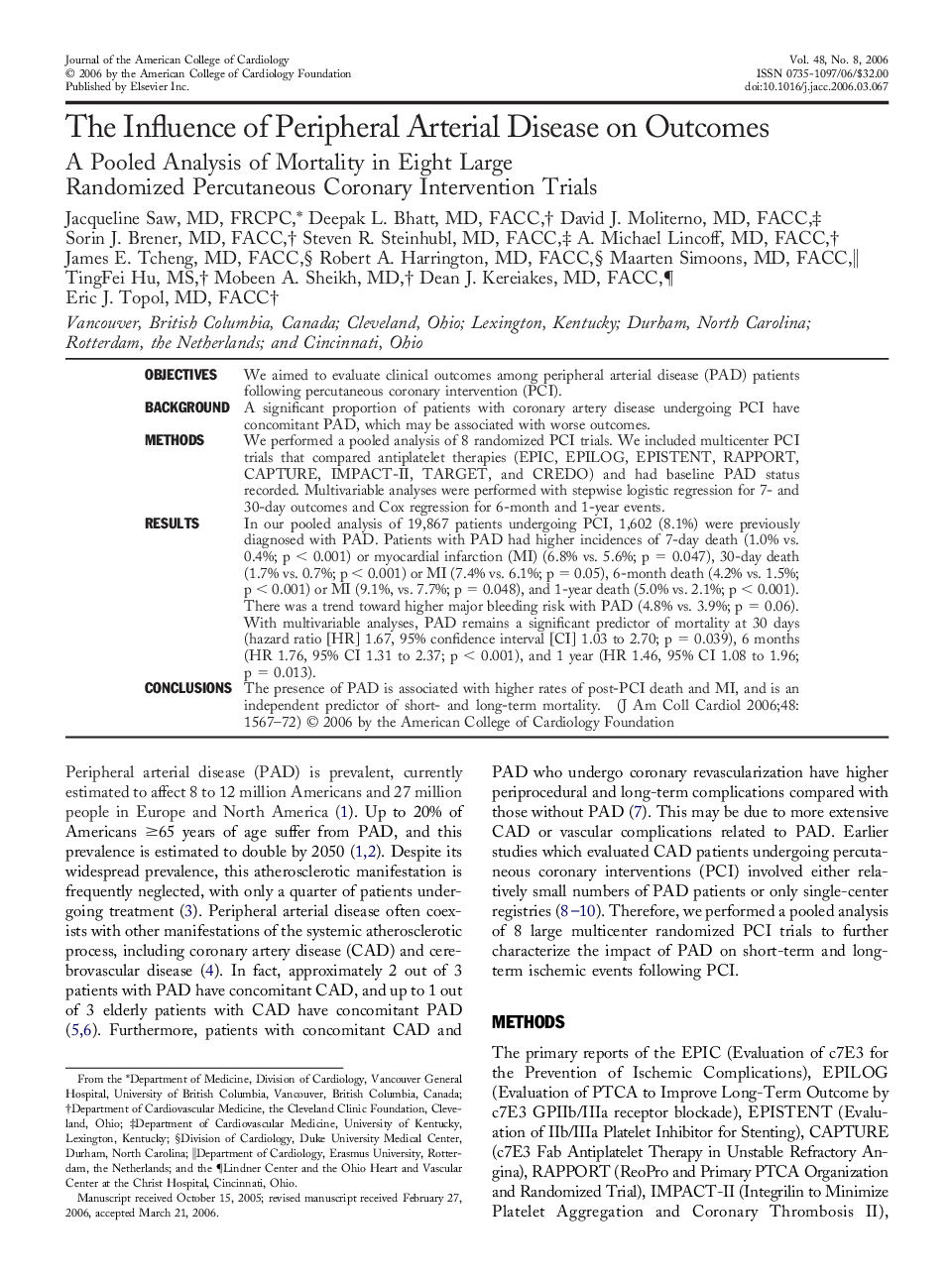| Article ID | Journal | Published Year | Pages | File Type |
|---|---|---|---|---|
| 2953935 | Journal of the American College of Cardiology | 2006 | 6 Pages |
ObjectivesWe aimed to evaluate clinical outcomes among peripheral arterial disease (PAD) patients following percutaneous coronary intervention (PCI).BackgroundA significant proportion of patients with coronary artery disease undergoing PCI have concomitant PAD, which may be associated with worse outcomes.MethodsWe performed a pooled analysis of 8 randomized PCI trials. We included multicenter PCI trials that compared antiplatelet therapies (EPIC, EPILOG, EPISTENT, RAPPORT, CAPTURE, IMPACT-II, TARGET, and CREDO) and had baseline PAD status recorded. Multivariable analyses were performed with stepwise logistic regression for 7- and 30-day outcomes and Cox regression for 6-month and 1-year events.ResultsIn our pooled analysis of 19,867 patients undergoing PCI, 1,602 (8.1%) were previously diagnosed with PAD. Patients with PAD had higher incidences of 7-day death (1.0% vs. 0.4%; p < 0.001) or myocardial infarction (MI) (6.8% vs. 5.6%; p = 0.047), 30-day death (1.7% vs. 0.7%; p < 0.001) or MI (7.4% vs. 6.1%; p = 0.05), 6-month death (4.2% vs. 1.5%; p < 0.001) or MI (9.1%, vs. 7.7%; p = 0.048), and 1-year death (5.0% vs. 2.1%; p < 0.001). There was a trend toward higher major bleeding risk with PAD (4.8% vs. 3.9%; p = 0.06). With multivariable analyses, PAD remains a significant predictor of mortality at 30 days (hazard ratio [HR] 1.67, 95% confidence interval [CI] 1.03 to 2.70; p = 0.039), 6 months (HR 1.76, 95% CI 1.31 to 2.37; p < 0.001), and 1 year (HR 1.46, 95% CI 1.08 to 1.96; p = 0.013).ConclusionsThe presence of PAD is associated with higher rates of post-PCI death and MI, and is an independent predictor of short- and long-term mortality.
